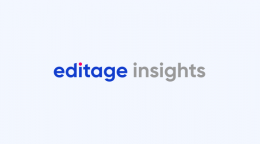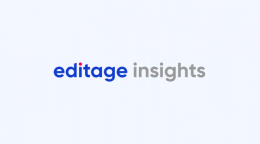How can libraries create inclusive environments and promote diverse collections?

At the core of a librarian’s roles and responsibilities is curating a vast array of diverse information that both reflects the diverse makeup of the community and meets their needs. In academic settings, they act as both curators and gatekeepers of information, actively working to provide access to a variety of research materials and resources that cover broad viewpoints. They meticulously evaluate sources, considering factors such as accuracy, relevance, and diversity, to create collections that are not only informative but also inclusive. This commitment also ensures that library users not only see themselves represented within the resources but also have the chance to learn from the contributions of various diverse communities, enhancing their understanding of different perspectives.
Ultimately, a librarian's dedication to enhancing the quality and accessibility of their collections directly impacts the educational and cultural growth of the communities they serve. To empower academic libraries in their mission, the quality of their collections is equally crucial as their functionality, specifically the degree to which they fulfill their intended purposes. Here, we take a look at some strategies for academic libraries to better promote their diverse collections and promote inclusivity.
1. Performing Audits to Ensure Diversity of Voices
Diversity audits provide critical insights for developing more inclusive library collections. These audits enable library staff to gain a deeper understanding of their collection, assess its alignment with the demographic composition of the student community, and identify areas requiring enhancement, be it specific topics or groups. Furthermore, they can also facilitate the establishment and implementation of diversity objectives and timelines, enabling progress tracking toward these goals, and demonstrate this effort to relevant stakeholders. Additionally, diversity audits underscore the necessity for improvement when pursuing external funding, partnerships, or support, and they illustrate how advancements in the collection can positively impact academic outcomes.
A study exploring the audit of Tredway Library at Augustana College highlights the necessity for collection development initiatives aimed at enriching the library's collection with greater diversity and inclusivity.
2. Collaborating with Diverse Stakeholders
To effectively commit to diversifying library collections, engaging with key stakeholders is essential to understand their perspectives, concerns, and suggestions. This push for diversification extends beyond library staff, and includes important figures from the broader academic sphere, such as administrators, department heads, researchers, instructors, students, and various community groups, including institutes, clubs, funders, and associations. Additionally, involving local communities is crucial, as their perspectives can enrich the effort. It's important to recognize that the quest for diversity can be contentious, influenced by local political climates. In these scenarios, having a clear directive and backing from institutional allies becomes vital for the library staff to maintain their focus and achieve their objectives.
The University of Arizona libraries conducted a catalog review to improve discoverability of their Arizona Indigenous peoples-related manuscripts, guiding community engagement priorities and creating a guide for researchers.
3. Championing Open Access Initiatives
Since at least 2008, the volume of Open Access (A) around the globe has been on the rise. The growth of OA journals has also promoted open research across niche and diverse fields, enhancing the representation of varied perspectives, particularly from the Global South. OA not only alleviates the escalating costs of journal subscriptions for libraries but also allows them to enrich and diversify their collections. This presents an excellent opportunity for librarians to champion the inclusion of Diversity, Equity, and Inclusion (DEl) considerations in the OA initiatives they endorse.
In 2022, The Penn Libraries launched an initiative that provides free global access to more than 300 Latin American monographs, published by the Latin American Council of Social Sciences.
4. Using Inclusive Terms and Cataloging
Academic librarians aiming to promote diversity in their collections may face challenges in accurately cataloging and identifying materials related to DEl due to their complexity. The results of a survey on the most popular metadata schemas used in libraries revealed some limitations in effectively documenting diversity. It was found that grouping key indicators of diversity into metadata elements might restrict users' ability to search for specific identity descriptors. Moreover, the lack of clarity in terms used for indigeneity and disability could create obstacles for accessing relevant materials. A specific example is seen in LGBTQ cataloging, where outdated and vague terms are often employed, making it difficult for users to find the required information.
A step in the right direction, Duke University Libraries have enhanced their cataloging practices to adapt to the evolving social landscape, both in terms of future works and in reassessing older metadata. This initiative aims to ensure that descriptions are inclusive and precise, particularly for works created by and about individuals from marginalized groups.
5. Digitizing library collections
Digitization can significantly benefit library collections by making them accessible electronically, removing physical and geographical barriers, which ultimately expands the reach to a broader audience rather than limiting it to a select group of researchers. This transition also enables quicker searches, and it enhances the visibility of not just published works but also academic contributions from researchers, including theses, seminar papers, and conference proceedings, thereby promoting a culture of scholarship within the university community. Furthermore, by exhibiting digital collections, institutions can elevate their profile and engage in beneficial public relations efforts.
The University of Minnesota Libraries’ project to digitize the African American materials within its collections was aimed at making previously overlooked items in archival versions more discoverable, ensuring that these valuable resources are accessible and can be re-aggregated for greater visibility.
Academic libraries have the unique opportunity to support the wide array of experiences, identities, and perspectives present within both the academic community and the larger society. By prioritizing continuous assessment of their resources, championing open access initiatives and engaging with their local communities, academic libraries can ensure that they are evolving in tandem with the academia’s increasing emphasis on DEI. This commitment by academic libraries to curate diverse collections plays a crucial role in shaping a more equitable and inclusive academic landscape.
Stronger research support starts with the right tools. Discover how Paperpal—designed for academic writing—helps researchers elevate their scholarly work.
Comments
You're looking to give wings to your academic career and publication journey. We like that!
Why don't we give you complete access! Create a free account and get unlimited access to all resources & a vibrant researcher community.

Subscribe to Conducting Research
Conducting research is the first and most exciting step in a researcher's journey. If you are currently in this stage of your publishing journey, subscribe & learn about best practices to sail through this stage and set yourself up for successful publication.













